Potential benefits of therapeutic cannabis in the treatment of leukemia and lymphoma

Welcome to this guide, where we will see how cannabis is proving to be a potentially beneficial plant in therapies for the treatment of various tumors and how it can specifically make a difference for one type of cancer in particular: leukemia.
As the legalization of medical cannabis becomes increasingly widespread in various states and countries, it is important to understand the potential benefits, risks and factors to take into consideration in the treatment of cancer pathologies, particularly for people suffering from leukemia and lymphoma. In this blog we will delve deeper into the topic, shedding light on current research, treatment options and practical advice, discovering everything there is to know about it.
What is leukemia?

This disease is part of a category of particular tumors that attack blood cells in the bone marrow. Its course involves a very rapid proliferation of abnormal cells, called leukemic blasts, i.e. not fully developed white blood cells that alter the normal functioning of the immune system.
Normally, white blood cells help the body fight infections and diseases, but in this case the abnormal cells in the blood accumulate, outnumbering healthy blood cells and compromising their ability to perform their functions.
These factors can affect people's health in different ways; when leukemic cells crowd the bone marrow, there is a reduction in the production of white blood cells, an abnormal condition which leads to the consequence of a weakened immune system, making the organism more vulnerable and susceptible to external factors such as bacteria and viruses. Leukemia cells can spread into the blood and lymphatic organs, making timely diagnosis and appropriate treatment essential.
In addition to white blood cells, this condition can also cause a shortage of red blood cells, which often results in anemia in affected individuals. By reducing the oxygen-carrying capacity of the blood, anemia causes symptoms of fatigue, difficulty breathing and pale skin.
Leukemia cells can also interfere with the production of platelets, responsible for blood clotting. Consequently, conditions of excessive bleeding, bruises and copious bleeding from cuts or wounds, even very superficial ones, may occur.
The accumulation of blasts can lead to enlargement of the lymph nodes and spleen, triggering pain accompanied by sensations of swelling in the abdomen. By infiltrating the bone marrow, leukemia cells cause bone and joint pain, often felt in the back, hips, ribs and all large bones. This disease can also cause involuntary weight loss and a lack of appetite because it affects the body's metabolism and general well-being, as well as causing sweating in the groin and armpit area and chronic weakness and tiredness, which manifest mainly in the evening . Insomnia and depression are also symptoms often associated with leukemia, which can influence the treatment path and the quality of life of patients while the reason for fatigue is often the presence of anemia.
Specific symptoms and effects may vary depending on the type of leukemia, the stage of the disease, and other individual factors. Leukemia is classified based on prognosis and sensitivity to therapy, with some patients responding better to treatments than others. A weakened immune system and a history of HIV can increase the risk of developing acute forms of leukemia and lymphoma. While lymphomas are more common and can affect the lymphatic system, the origin of the cancer cell can vary between different forms of leukemia. Some forms are more frequent than others and although they have risk factors in common with each other, they differ in symptoms and course of the disease. Let's see how some main acute forms manifest themselves:
In acute lymphoblastic leukemia or ALL, lymphoblasts, i.e. immature lymphoid cells, multiply rapidly and acutely, replacing healthy cells. This variant progresses slowly and requires immediate treatment, predominantly affecting children rather than adults. Common symptoms include fatigue, fever, bruising, frequent infections and swollen lymph nodes.
Chronic lymphocytic leukemia (CLL), on the other hand, involves the excessive growth of mature but abnormal lymphocytes that accumulate slowly over time. This form, unlike the lymphoblastic one, mainly affects the elderly and is more common in the male population. It is often diagnosed incidentally during routine blood tests as patients may not have obvious symptoms in the early stages. Common symptoms may include swollen lymph nodes, fatigue, weight loss, and recurrent infections.
In the case of acute myeloid leukemia (AML), immature myeloid cells (myeloblasts) multiply rapidly, interfering with the normal production of blood cells. This condition can affect both children and adults, but is more common in older adults. Symptoms may include fatigue, pale skin, bleeding tendency, frequent infections, and bone pain.
Finally, chronic myelogenous leukemia (CML) is characterized by the excessive production of mature but abnormal granulocytes (a type of white blood cell). It mainly affects adults, with a higher incidence in older age groups and as with chronic lymphocytic leukemia, it is often diagnosed during routine blood tests in the chronic phase, when patients may be asymptomatic.
In later stages, symptoms may include fatigue, weight loss, abdominal discomfort, and an enlarged spleen.
A timely diagnosis of these conditions allows us to act effectively in the treatment of these pathologies in order to counteract their progression through various therapies such as chemotherapy, radiotherapy, stem cell transplant and other drugs. Radiation is often used as part of chemoimmunotherapy and radiotherapy treatments which are often the main weapon of attack to combat blood cancers such as leukemia and Hodgkin's lymphoma.
Neoplasms can develop in two different ways and a genetic mutation related to each form has been identified which influences the type of treatment necessary. The American Cancer Society provides important information about available treatments for blood cancers, including different forms of leukemia, and the Journal of Oncology regularly publishes studies on the prognosis, response to treatment, and rate of progression of acute forms of leukemia.
Although the response to these treatments in the medicinal field has proven to be effective, when using chemical substances the side effects associated with them are not few and often very invasive and debilitating for the normal functioning of the organism. For this reason, today we will investigate the benefits offered through the use of cannabis derivatives in the treatment of this pathology.
Studies on the use of therapeutic cannabis and cannabinoids in leukemia

In addition to its recreational use, marijuana has proven to be a powerful form of therapy thanks to the positive impact it has on our body for the treatment of various conditions. The components of cannabis sativa, called cannabinoids, influence our health through their interaction with our endocannabinoid system . Among the substances contained in marijuana that have proven to have the greatest impact on our well-being are THC and CBD with their pain-relieving, antispasmodic, anti-inflammatory and appetite-stimulating properties.
Research in this regard is constantly developing, but more and more data and experiments confirm how much potential there is to discover in this plant. Chemoimmunotherapy and radiotherapy treatments often represent the first line of therapy for patients with leukemia and lymphoma, but this does not exclude the potential benefit of alternative therapies that can be combined with these treatments.
A study on potential interactions between hemp derivatives and common drugs for the treatment of leukemia revealed that some pairs of phytocannabinoids such as CBD and THC have demonstrated synergistic effects in improving tumor activity compared to individual use. Furthermore, these couplings have proven effective in enhancing the cytotoxic effects of chemotherapy drugs by sensitizing leukemic cells to their action. The conclusion of this study is that this combination therapy could reduce the required dosage of cytotoxic agents used in the treatment of cancer while maintaining their effectiveness and that therefore a cannabis therapy can complement chemoimmunotherapy treatments giving positive results.
Another study carried out on the case of a 14-year-old patient with a very aggressive form of ALL demonstrated very interesting results. The patient underwent standard chemotherapy and bone marrow transplant, but with poor results. As the patient's condition worsened, the family decided to administer a therapy based on cannabinoid extracts . Over the course of 78 days the treatment demonstrated surprisingly positive results, without presenting toxic side effects, unlike conventional chemotherapies.
Although research is still in the development phase, the use of this plant has proven to be an excellent ally in the fight against cancer : its compounds, in particular THC and CBD, have shown the ability to induce the programmed death of affected cells from cancer (apoptosis) as well as being a great source of relief by counteracting the pain caused by the more severe symptoms that many patients suffering from this condition experience.
In addition to this, it has been discovered how treatments using medical cannabis can hinder the growth of angiogenesis, or the creation of new blood vessels that supply nutrients and oxygen to tumors. This inhibition can limit tumor growth and metastasis.
Other results of using medical cannabis have demonstrated the ability to slow the proliferation (growth and division) of cancer cells. Thus, by reducing cell division rates, cannabis as a therapy can help control tumor expansion.
Among the most important benefits when we talk about hemp-based therapies is its anti-inflammatory and immunomodulatory potential. Chronic inflammation can promote cancer development and progression; some components of the plant, such as cannabidiol , have demonstrated notable anti-inflammatory effects, significantly reducing the inflammatory environment that supports tumor growth.
Preclinical studies have suggested how these therapies may inhibit the spread of diseased cells to distant organs, which is a critical factor in cancer progression and treatment outcomes. By interacting with various signaling pathways involved in the growth, survival and metastasis of cancer cells, hemp compounds modulate these pathways, interfering with cancer progression.
Importantly, while these results are promising, much of the research has been conducted in preclinical settings (laboratory and animal) and further clinical trials in humans are still needed to establish the safety and effectiveness of cannabis-based treatments therapeutics for the treatment of cancer. Furthermore, it is good to note that in patients, the demands of the host organism may vary depending on the phase of the disease and the treatments in progress.
The use of Cannabis as Therapy: Does Marijuana have therapeutic potential for Leukemia and Lymphoma?

While research is still ongoing, preliminary results already suggest that cannabis may represent a complementary therapeutic option to conventional therapies. Leukemia is still a disease for which new remedies and solutions are being researched and tested, if you or someone you know is considering the use of cannabis as part of the treatment of this disease, consult with healthcare professionals to ensure a well-informed approach suited to your situation.
Together we can navigate this complex landscape and strive for better outcomes in leukemia treatment!



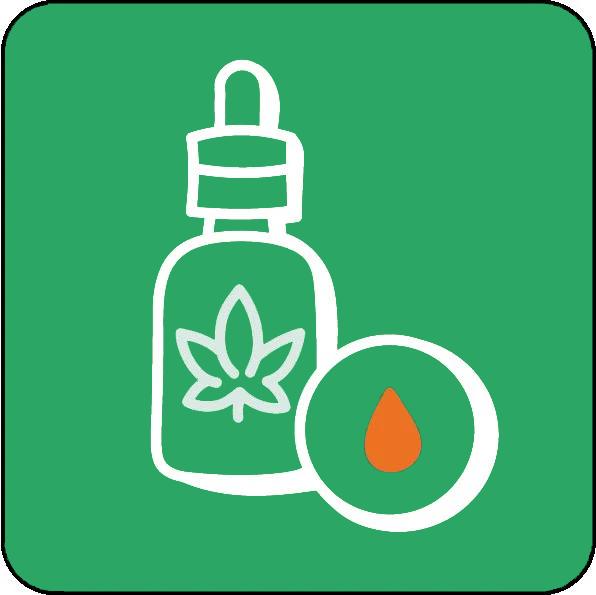



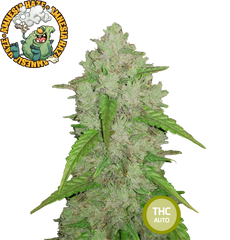
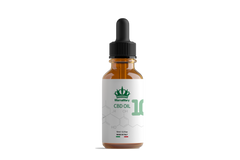
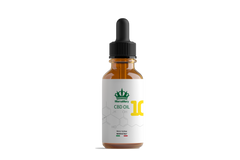
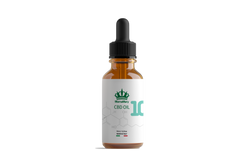

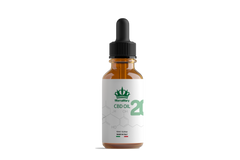
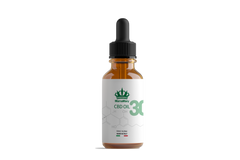
2 comments
Vorrei essere in contatto al numero 3336620659
Oltre al fatidico non si preoccupi, bisogna tenere sotto controllo l’evoluzione, ci si aspetta che insorgano patologie per intervenire poi con cure che avete ben riferito.
Ma bisogna aspettare o incominciare ad assumere prodotti a base di cannabis per poter aiutare il corpo, e la mente, per contrastare questa malattia? In regione Campania il servizio sanitario predispone il protocollo per l’uso della cannabis terapeutica, ma per questa malattia ci sono ematologia che possono prescriverla? Grazie mille